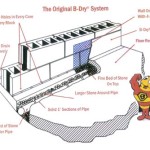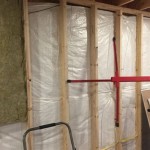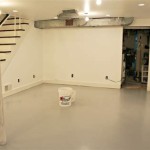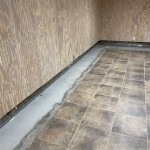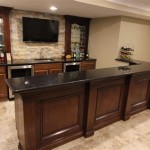Recommended Humidity Level for Basement: A Comprehensive Guide
A basement is a valuable addition to any home, providing extra space for storage, hobbies, or even a living area. However, improper humidity levels can turn your basement into a breeding ground for mold, mildew, and other issues. Maintaining the recommended humidity level is crucial for preserving the integrity of your basement, ensuring the comfort of its occupants, and preventing potential health hazards.
The ideal humidity range for a basement is between 30% and 50%. This range helps prevent the growth of mold and mildew, which can cause respiratory problems, allergies, and structural damage to your basement. Additionally, it reduces the risk of condensation, which can lead to water damage and other issues.
There are several factors that can affect the humidity level in your basement, including the climate in your area, the presence of moisture sources, and the effectiveness of your ventilation system. If you live in a humid climate or have a basement that is prone to moisture, it is important to take steps to control the humidity level.
Here are some tips for maintaining the recommended humidity level in your basement:
1. Install a Dehumidifier:
A dehumidifier is a device that removes moisture from the air. It is an effective way to control the humidity level in your basement, especially if you live in a humid climate. Dehumidifiers are available in a variety of sizes and capacities, so you can choose one that is right for your needs.
2. Improve Ventilation:
Good ventilation helps to circulate the air in your basement and remove moisture. Make sure that your basement has adequate ventilation by opening windows and doors when possible. You can also install a fan or exhaust system to help circulate the air.
3. Seal Moisture Sources:
If there are any sources of moisture in your basement, such as a leaking pipe or a damp crawlspace, it is important to seal them to prevent the humidity level from rising. You can use caulk, sealant, or other materials to seal the leaks.
4. Use Moisture-Resistant Materials:
When finishing your basement, use moisture-resistant materials, such as drywall, paint, and flooring. These materials will help to prevent moisture from being absorbed into your basement and raising the humidity level.
By following these tips, you can maintain the recommended humidity level in your basement and prevent the problems that can be caused by excessive moisture. A dry and comfortable basement is an asset to your home, providing extra space for storage, hobbies, or even a living area. Invest in the proper humidity control measures to ensure the longevity and comfort of your basement.

Dehumidifier Setting Chart What Should Be Set At

How To Achieve An Ideal Basement Humidity Of 30 50

A Guide To Controlling Nc Home Humidity Newcomb And Company

What Is The Ideal Basement Humidity Level Epp Foundation Repair

Hot In Here How To Maintain Ideal Indoor Humidity Summer

How To Achieve An Ideal Basement Humidity Of 30 50

Comfortable Hardwood Floor Temperature And Humidity Easiklip Floors

The Ideal Humidity Level For Your Basement Reliable Waterproofing

What Is The Ideal Basement Humidity Level Homeprofy

How To Keep The Perfect Humidity Level Inside Healthy House On Block
